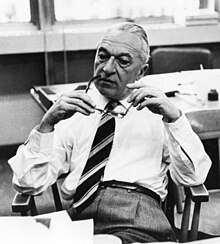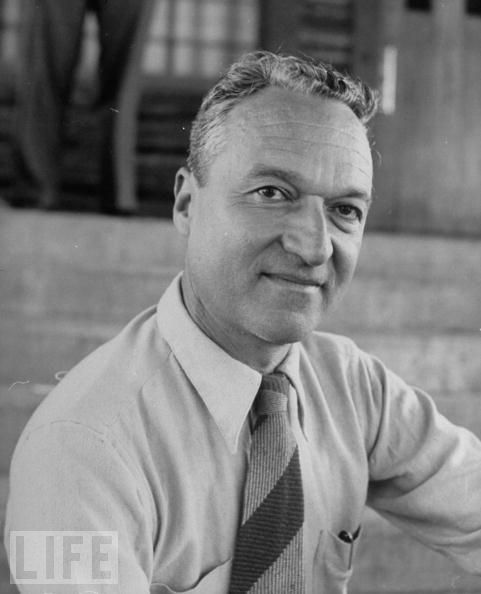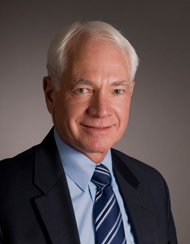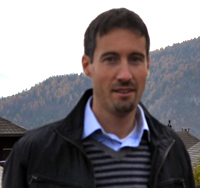Bruno Rossi
Bruno Benedetto Rossi ( born April 13, 1905 in Venice, † November 21, 1993 in Cambridge, Massachusetts ) was an Italian astrophysicist and elementary particle physicist.
Life
Rossi received his doctorate at the University of Bologna and from 1928 was assistant professor at the University of Florence. In 1932 he became professor of experimental physics at the University of Padua. As a Jew, he lost his professorship in 1938 and went on Copenhagen and Manchester in the United States, where he was a 1939 visiting scholar at the University of Chicago. In 1942 he was associate professor at Cornell University. During World War II he worked on radar development at the Massachusetts Institute of Technology (MIT) Radiation Lab and later in Los Alamos at the nuclear weapons program (he was co-head of the group for detector development). In 1946 he became a professor at MIT, where he again studied cosmic rays and the late 1950s, was a pioneer of rocket experiments, eg for the measurement of the interplanetary plasma, and ( as a consultant for American Science and Engineering Inc.) discovered the first X-ray source outside the solar system ( Scorpio X-1). In 1965 he became Institute Professor at MIT. In 1970, he went there to retire and taught from 1974 to 1980 at the University of Palermo.
Rossi was awarded the 1987 Wolf Prize in Physics, 1983 National Medal of Science, 1963, the Medal of Merit of the Italian Republic, 1971 Antonio Feltrinelli Prize of the Accademia Nazionale dei Lincei, 1976 Rumford Prize of the American Academy of Arts and Sciences and in 1970 the Gold medal of the Italian physical Society. He was an honorary Doctor of Palermo, La Paz, Durham and Chicago and an honorary member of the Tata Institute of Fundamental Research (1971). Rossi was a member of the National Academy of Sciences.
The X-ray satellite Rossi X -ray Timing Explorer NASA is named after him. The American Astronomical Society awarded him the honor of Bruno Rossi Prize and a chair at MIT is named after him.
His doctoral Kenneth Greisen heard.
In his honor, the Bruno Rossi Prize is awarded for high -energy astrophysics.
Work
Bruno Rossi was in the 1930s, a pioneer in the study of cosmic rays and was one of the first who proved cosmic X-ray experiments with rockets.
In 1939 he exhibited at the University of Chicago was the first to decay of the muon after and measured ( at Cornell University) whose average life.
Rossi also developed a series of electronic techniques in experimental physics, for example, in 1930 the coincidence circuits for observation, 1942 "Time to Amplitude Converter" and in 1943 in Los Alamos with Hans H. dust the "Fast Ionization Chamber".










